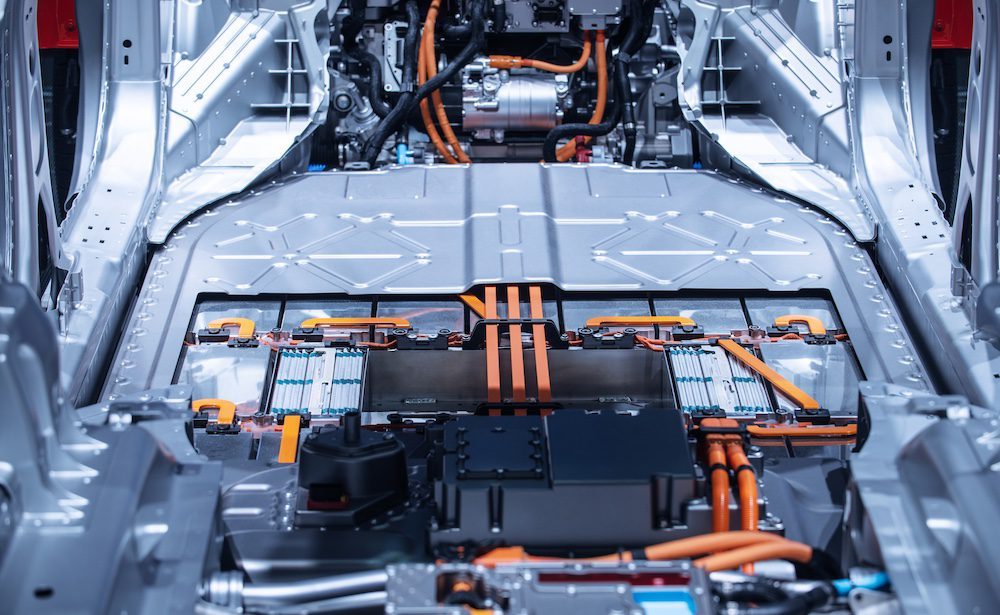As battery technology rapidly advances toward higher capacities and faster charging capabilities, the humble connectors that link these power systems face unprecedented challenges. Traditional XT60 and XT90 connectors—once staples in drones, RC vehicles, and early energy storage systems—are increasingly becoming bottlenecks in modern applications. This comprehensive analysis examines why next-generation energy storage demands new connection solutions and what technologies are emerging to meet these critical needs.
Whether you’re designing EV battery packs, industrial energy storage systems, or marine power solutions, understanding these connector innovations is essential for maximizing performance, safety, and longevity in your applications. Let’s explore the limitations of current technology and the four breakthrough areas transforming battery connections in 2025 and beyond.
What’s Wrong With Today’s Battery Connectors?
มาตรฐาน XT60 และ XT90 ช่วยเราได้ดีในยุคของโดรนและรถ RC แต่ความต้องการในการจัดเก็บพลังงานสมัยใหม่เผยให้เห็นจุดอ่อนที่สำคัญสี่ประการ ประการแรก ข้อจำกัดความหนาแน่นของกระแสไฟฟ้า สร้างคอขวดในแอปพลิเคชันพลังงานสูง เช่น ESS (ระบบกักเก็บพลังงาน) ในอุตสาหกรรม และสถานีชาร์จเร็วสำหรับยานยนต์ไฟฟ้า การศึกษาวิจัยในปี 2025 พบว่าการเชื่อมต่อแบบบัดกรีแบบดั้งเดิมมีส่วนทำให้ระบบต้านทาน 12% ในอาร์เรย์แบตเตอรี่เชิงพาณิชย์

ที่สอง, การจัดการความร้อน becomes problematic above 150A continuous load. We’ve seen connector temperatures spike to 85°C in prototype 800V EV battery packs using modified XT90s – dangerously close to lithium battery thermal runaway thresholds. Third, the complete การขาดการวินิจฉัยแบบบูรณาการ ทำให้ผู้ปฏิบัติงานมองไม่เห็นปัญหาการเชื่อมต่อจนกว่าจะเกิดความล้มเหลว ในที่สุด กระบวนการจีบ/บัดกรีด้วยมือคิดเป็น 23% ของต้นทุนแรงงานประกอบชุดแบตเตอรี่ตามข้อมูลการผลิตยานยนต์
ความก้าวหน้าสี่ประการที่กำหนดการเชื่อมต่อแบตเตอรี่ใหม่
1. วัสดุไฮเปอร์คอนดักทีฟ
The latest connector alloys combine copper’s conductivity with exotic materials’ durability. BMW’s next-gen EVs use Molex Volfinity connectors with silver-beryllium contacts that achieve 99.97% IACS conductivity while withstanding 25,000 mating cycles. For harsh environments, JAE’s MX80 series employs graphene-infused nickel plating that reduces contact resistance by 40% compared to standard gold plating.

We’re particularly excited about เคลือบลิ้นชัก technology – a copper-aluminum composite that eliminates galvanic corrosion in marine and off-grid solar applications. Early adopters report 83% fewer connection failures in salt spray tests compared to traditional bus bars.
2. ระบบนิเวศตัวเชื่อมต่ออัจฉริยะ
Modern battery management demands real-time data, and connectors are rising to the challenge. MG Energy’s SmartConnect system embeds 8 temperature sensors and CAN-Bus communication directly into each connector pair. This allows precise thermal mapping of battery terminals – crucial for preventing hot spots in our แบตเตอรี่ LiFePO4 แบบกำหนดเอง.
TE Connectivity’s new HVSL (High Voltage Smart Link) connectors take this further, integrating Hall-effect current sensors and automatic contact resistance calibration. During recent testing with our ต้นแบบแบตเตอรี่อุตสาหกรรม, these smart connectors detected a 0.2mΩ resistance increase three weeks before visible corrosion appeared.
3. การออกแบบเชิงกลที่ปลอดภัยต่อความล้มเหลว
Safety innovations are transforming connection reliability. UK PowerTech’s TSC connector uses spring-loaded copper fingers that maintain constant pressure despite vibration – reducing arc-related failures by 91% in mobile applications. For catastrophic scenarios, patented fuse-integrated connectors like those in EP2823520A1 automatically isolate faulty cells within 50ms.
We’re implementing these principles in our ระบบแบตเตอรี่ทางทะเลซึ่งการสัมผัสกับน้ำเกลือและความเค้นทางกลต้องการการเชื่อมต่อที่เชื่อถือได้อย่างยิ่ง
4. การผลิตอย่างยั่งยืน
The connector industry is tackling its environmental impact head-on. Weidmüller’s new Eco-Line series uses 78% recycled copper while maintaining 1000V/250A ratings. More radically, SENS USA’s SC4 monitoring system enables connectors to last through multiple battery lifecycles via predictive maintenance algorithms.
การนำการเชื่อมต่อแบบ Next-Gen มาใช้
การเปลี่ยนไปใช้ตัวเชื่อมต่อขั้นสูงต้องมีการวางแผนในระดับระบบ เมื่ออัปเกรด แบตเตอรี่ EV แบบกำหนดเองเราประเมินปัจจัยหลักสามประการ:
- โปรไฟล์ปัจจุบัน:โหลดแบบพัลส์และแบบต่อเนื่องส่งผลกระทบอย่างมากต่อขนาดของขั้วต่อ
- ข้อกำหนดข้อมูล:การเปลี่ยนแปลงสถาปัตยกรรม BMS ระหว่าง CAN-Bus และการตรวจสอบแรงดันไฟฟ้าแบบง่าย
- ปัจจัยกดดันด้านสิ่งแวดล้อม:การสั่นสะเทือน ความชื้น และการเปลี่ยนแปลงของอุณหภูมิเป็นตัวกำหนดการเลือกใช้วัสดุ
วิศวกรของเราประสบความสำเร็จในการลดพื้นที่ลง 22% เมื่อไม่นานนี้ แบตเตอรี่จักรยานไฟฟ้า using flat-flex PCB connectors instead of traditional barrel types – without compromising 150A peak current capacity.
ถนนข้างหน้า
เนื่องจากอุตสาหกรรมกำลังมุ่งหน้าสู่แบตเตอรี่โซลิดสเตต สถาปัตยกรรม 1000V+ และระบบจัดเก็บความหนาแน่นสูงพิเศษ เทคโนโลยีขั้วต่อจึงต้องพัฒนาไปพร้อมๆ กัน การวิเคราะห์เทคโนโลยีใหม่ๆ ของเราเผยให้เห็นแนวโน้มสำคัญหลายประการที่ผู้เชี่ยวชาญด้านแบตเตอรี่ควรติดตาม:
- นวัตกรรมด้านวิทยาศาสตร์วัสดุ เช่น ตัวนำที่เสริมด้วยนาโนท่อคาร์บอนและตัวนำไฟฟ้าที่ซ่อมแซมตัวเองได้ มีแนวโน้มที่จะลดความต้านทานลงอีกพร้อมทั้งยืดอายุการใช้งานอีกด้วย
- การบูรณาการการตรวจสอบเชิงคาดการณ์ตาม AI เข้ากับระบบเชื่อมต่อจะช่วยให้การบำรุงรักษาเชิงคาดการณ์เป็นจริง
- ความพยายามในการสร้างมาตรฐานสำหรับการเชื่อมต่อ DC กำลังไฟสูงน่าจะเร่งการนำไปใช้ในทุกอุตสาหกรรม
รายการตรวจสอบการใช้งานสำหรับผู้เชี่ยวชาญด้านแบตเตอรี่:
- Evaluate your system’s current profile (continuous vs. peak loads) to determine optimal connector specifications
- พิจารณาต้นทุนตลอดอายุการใช้งานทั้งหมดแทนราคาส่วนประกอบเริ่มต้น
- ทดสอบประสิทธิภาพของขั้วต่อภายใต้เงื่อนไขสภาพแวดล้อมเฉพาะของคุณ
- รับประกันความสามารถในการปรับขนาดสำหรับการเพิ่มกำลังการผลิตในอนาคตโดยไม่ต้องออกแบบใหม่ทั้งหมด
ด้วยการอัปเกรดระบบการเชื่อมต่ออย่างมีกลยุทธ์ในขณะนี้ ผู้ผลิตและผู้รวมระบบกักเก็บพลังงานสามารถหลีกเลี่ยงการติดตั้งเพิ่มเติมที่มีราคาแพงในขณะที่มอบประสิทธิภาพที่เหนือกว่า การปฏิวัติตัวเชื่อมต่ออาจเงียบเหงา แต่ผลกระทบต่อระบบกักเก็บพลังงานรุ่นต่อไปจะมีความลึกซึ้ง
คุณเผชิญกับความท้าทายด้านขั้วต่อใดบ้างในการใช้งานระบบจัดเก็บพลังงาน เข้าร่วมการสนทนาในส่วนความคิดเห็นด้านล่างหรือติดต่อผู้เชี่ยวชาญด้านขั้วต่อที่มีคุณสมบัติเหมาะสมเพื่อประเมินความต้องการเฉพาะของคุณ


